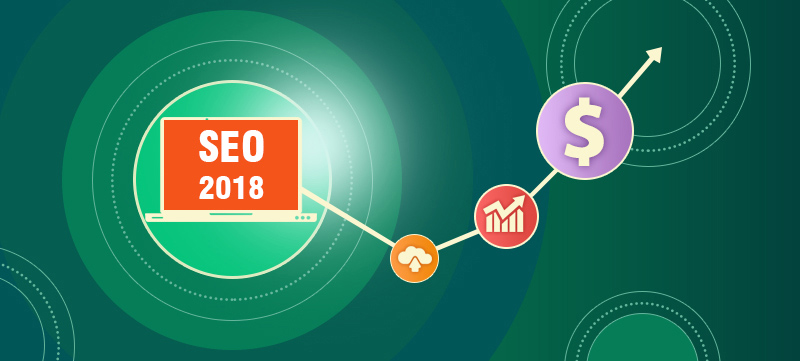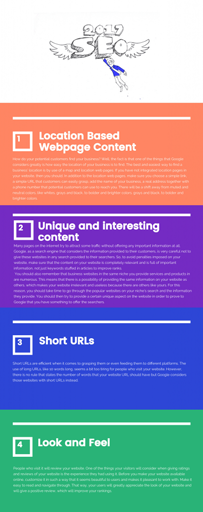I hope you enjoy reading this blog post.
If you want to get more traffic, Contact Us

Click Here - Free 30-Minute Strategy Session
Be quick! FREE spots are almost gone for this Month. Free Quote

In an era dominated by digital transformation, search engine optimisation (SEO) remains a pivotal strategy for businesses aiming to thrive online. With global internet usage continually increasing, competition for visibility has intensified. Algorithms have grown more sophisticated, emphasising user experience and relevancy, making outdated tactics obsolete.
Mobile and voice searches are reshaping consumer behaviours, further highlighting the importance of adaptive SEO approaches. Additionally, reliance on organic search drives significant traffic for businesses, offering a cost-effective alternative to paid campaigns. As search engines evolve, mastering SEO ensures higher rankings, building credibility and trust in a competitive digital landscape.

Click Here – Free 30-Minute Strategy Session
Be quick! FREE spots are almost gone for this Month
Search engines like Google frequently update their algorithms to refine how content is ranked. Core updates aim to enhance relevancy by prioritising quality, expertise, and user satisfaction. Staying ahead requires vigilance in tracking these updates and adapting strategies.
Key approaches include:
Monitoring industry announcements via trusted sources such as Google Search Central.
Performing regular site audits to identify content gaps or technical issues.
Investing in E-E-A-T (Expertise, Authoritativeness, Trustworthiness) principles.
Analysing competitors’ performance post-algorithm updates.
Proactivity ensures a website aligns with evolving ranking factors—minimising algorithm-specific setbacks while maximising visibility.
Keyword research forms the backbone of any SEO strategy, enabling websites to target audience needs effectively. By identifying relevant and high-performing keywords, businesses can align their content efforts with user intent. Effective research involves tools such as Google Keyword Planner, SEMrush, or Ahrefs to uncover data-driven keyword opportunities.
Marketers should prioritise long-tail keywords as they often capture specific queries and indicate higher purchase intent. Competitor analysis reveals gaps in keyword targeting and areas of growth, while monitoring trends ensures alignment with evolving search behaviour. Additionally, balancing high search volumes with lower competition helps optimise for achievable rankings and long-term results.
Quality content remains pivotal in shaping SEO outcomes. Search engines prioritise content that addresses user intent, providing informative material that resonates with audiences. Crafting valuable resources involves thorough research, ensuring accuracy and relevance, which builds trust and authority.
Relevance: Address topics aligned with target audience needs and interests.
Readability: Maintain clear structure with concise sentences and accessible vocabulary.
Engagement: Incorporate visuals, data, or interactive elements to enhance user experience.
Authority: Support claims with credible sources or citations to establish reliability.
Consistent updates and optimisations solidify the content’s value while fostering long-term organic growth.
Effective on-page optimisation revolves around ensuring website content aligns with user intent and search engine algorithms. Key elements include crafting compelling, keyword-optimised meta tags, such as titles and descriptions, which influence click-through rates. Structured headings (H1, H2, etc.) enhance readability and hierarchy, aiding search engines in understanding the content.
Internal linking connects relevant pages, improving navigation and spreading link equity across the site. Optimised URLs should be concise and incorporate relevant keywords for better indexing. Engaging copy with target keywords naturally woven into the content ensures relevance without overstuffing.
Image optimisation, including alt text and compressed file sizes, boosts accessibility and loading speeds. Regular audit of technical components strengthens SEO impact.
Mobile-first indexing prioritises the mobile version of a website for ranking and indexing in search engines. Since most users access websites via mobile devices, ensuring mobile compatibility has become essential. Websites must utilise responsive design for adaptability across screen sizes and ensure that content, images, and interactive elements display correctly on mobile devices.
Optimising page speed on mobile is critical, as slow-loading pages can hinder user engagement. Simplifying navigation, avoiding intrusive pop-ups, and using clean layouts further enhance mobile usability. Regularly testing the mobile version of a website using tools like Google’s Mobile-Friendly Test provides actionable insights to eliminate issues.
Creating authoritative backlinks is one of the core elements of successful SEO. Search engines perceive these links as signals of credibility and trustworthiness. To build such links, businesses should focus on earning links from high-quality, relevant websites within their industry.
Guest Posting: Collaborate with reputable blogs to publish valuable content that includes a link back to your site.
Content Promotion: Leverage shareable assets like infographics or in-depth articles to attract organic links.
Broken Link Building: Identify broken links on authoritative sites, then offer your content as a replacement.
Outreach Marketing: Foster relationships with influencers or editors in your niche for potential backlink opportunities.
Diversifying methods strengthens backlink profiles.
Improving page load speed is vital for both user experience and search engine rankings. Faster-loading pages reduce bounce rates and increase visitor engagement. Core Web Vitals, key metrics such as Largest Contentful Paint (LCP), First Input Delay (FID), and Cumulative Layout Shift (CLS), measure different aspects of page performance.
To optimise load speed, image compression is recommended, along with leveraging browser caching and enabling faster server response times. Prioritising mobile-friendly designs and using Content Delivery Networks (CDNs) helps to distribute content effectively. Regular audits of these metrics ensure consistent site performance, aligning pages with Google’s ranking criteria.
Local SEO focuses on targeting audiences within specific geographic areas, making it crucial for businesses with physical locations or local services. Optimising Google My Business profiles ensures visibility in local searches. Incorporating location-based keywords into website content helps search engines understand relevance to nearby users.
Businesses can benefit from local backlinks by partnering with nearby organisations or directories. Encouraging customer reviews on platforms like Yelp further reinforces local presence. Accurate location details, including name, address, and phone number (NAP), should remain consistent across all platforms. Combining these practices enhances visibility, driving foot traffic and engagement from local audiences.
Voice search technology has rapidly reshaped user behaviour, with devices like smart speakers and virtual assistants becoming an integral part of daily life. As more users turn to conversational queries, optimising for voice search is essential to capturing this growing audience. Semantic SEO, meanwhile, complements this by focusing on the intent behind search terms rather than just keyword matching.
To align with these trends, businesses are structuring content to answer natural, question-based queries. Incorporating long-tail keywords, rich snippets, and FAQ sections improves accessibility and relevance. Adopting schema markup ensures structured data is accurately interpreted, improving visibility across voice-based interfaces.
Sophisticated analytics tools play a crucial role in assessing and improving SEO performance. Platforms such as Google Analytics, SEMrush, or Ahrefs help users gain insights into website traffic, keyword rankings, and user behaviour. By tracking metrics such as click-through rates (CTR), bounce rates, and conversion rates, businesses can identify trends and optimise their strategies.
Real-time monitoring: Observe traffic changes and search trends instantly.
Keyword analysis: Understand which keywords drive the most engagement.
Competitor insights: Compare performance against industry rivals.
Customisable reports: Tailor data views to align with goals.
Feedback loops, triggered via analytics, ensure agile adjustments to maintain high rankings.
Artificial intelligence (AI) and machine learning transform SEO practices, offering automated solutions and deeper insights. AI-driven tools analyse vast datasets to identify trends, predict keyword performance, and assess user intent. Machine learning algorithms power personalisation, tailoring search results to individual behaviours and preferences, thus improving engagement metrics.
Marketers can leverage AI for real-time analytics, content optimisation, and finding hidden ranking opportunities. Tools such as AI-based platforms can suggest adaptive strategies by analysing competitors’ tactics and audience demands. Combining AI with traditional SEO techniques enables better decision-making and enhances precision.
The integration streamlines workflows, makes tasks less manual, and unlocks more competitive potential.
Adapting to constant changes in search engine algorithms is vital for maintaining competitive rankings. Harnessing data analytics allows SEO strategies to stay informed by real-time insights into user behaviour and emerging trends. Diversifying techniques such as utilising multi-platform strategies and embracing voice search optimisation can safeguard efforts against industry disruptions. Regular audits ensure websites remain compliant with algorithm updates, preventing penalties and performance drops. Overcoming challenges requires a commitment to innovation, whether through advanced AI tools or adapting consumer preferences. By staying proactive and agile, businesses build resilient SEO foundations, equipping themselves to tackle evolving landscapes and sustain success long-term.


LEAVE A REPLY